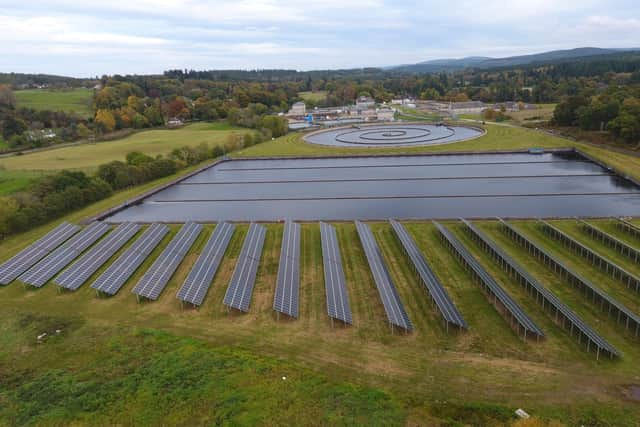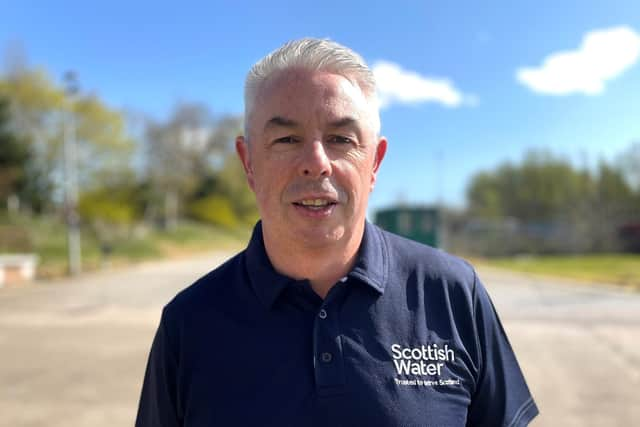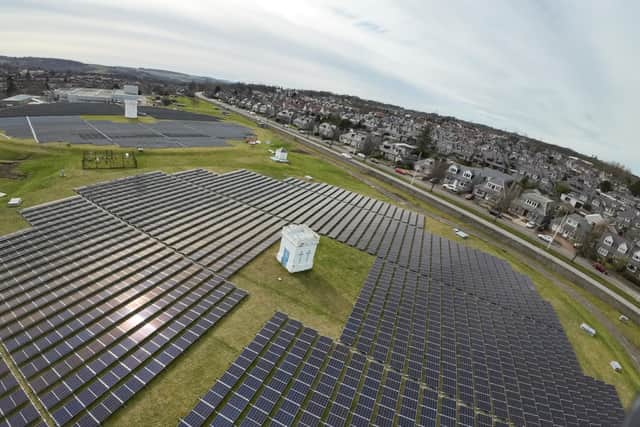Drain brain: How Scotland’s public water and sewage systems can be harnessed to help tackle climate change
A week might be a long time in some circles but in addressing the climate crisis and reducing emissions, it’s a drop in the ocean timewise.
In looking back over 15 years much has changed in our knowledge, understanding and approaches to reducing the impact we all have on the environment. Not only was a crisis declared but battle plans were drawn up to tackle it.
Advertisement
Hide AdAdvertisement
Hide AdNowhere has that been more clearly needed than in the world of water. Scotland’s public water and wastewater systems are at the forefront of changing climate and weather patterns – they provide early indicators of the real-world impacts and are also helping to answer what we can do to mitigate it.
Producing the nation’s daily water cycle is an energy-intensive business. Scottish Water is one of the biggest electricity users in the country. Emissions associated with water production and wastewater treatment and disposal mean the target of becoming a net zero public utility by 2040 is critical.
Scottish Water Horizons is the commercial arm of the country’s publicly funded water and wastewater services organisation, and has spent the past 15 years finding innovative answers to the question: how can we be less reliant on emissions-heavy power sources?
Water services underpin the daily lives of people across Scotland, in our homes, work and economically, and it's crucial we do all we can to make them emissions-free to unlock the full value of our most precious natural resource.
Flushing the toilet or draining water down the sink is regarded by many as a mundane, barely-thought-about act. But that used water – termed as “waste” – has the potential to unlock real sustainable energy value.


By extracting latent energy from wastewater networks, it can be recycled and repurposed as an ever-renewing, always-on source of heat.
Harnessing the sun to power photovoltaic panels with enough energy to run our biggest water treatment processing plants, meaning less reliance on electricity purchasing – and surplus solar power sent to the grid.
Running energy-hungry water and waste production facilities using innovative technologies that channel wind and hydro power, diminishing our carbon footprint rather than relying on energy which damages the environment has to be our collective focus.
Advertisement
Hide AdAdvertisement
Hide AdWe must all speed up and scale up our approaches. We have increasing asked: how can we help with and work with others to progress Scotland’s push towards a more sustainable way of living?


If the past 15 years have been seismic, the next 15 will be make or break given forecasts about the need for rapid action.
We’ve developed solutions around solar, hydro and waste technologies and we’re helping others achieve sustainability goals through areas such as co-digestion, food waste recycling and district heat networks.
The next big prize is building a hydrogen economy.
Access to water supplies is a vital element in the production of green hydrogen power. It’s clear there needs to be serious consideration given by energy companies to access these. The notion that the tap can just be turned on is risky – especially given the challenges we face around climate and water scarcity and security.


We are focused on using the country’s water assets and resources to pave the way for the revolution required around hydrogen power. Feasibility projects already underway use different water sources – potable treated water, untreated raw water, water from sources like lochs and rivers and final effluent from wastewater.
The focus will be on enabling – designing and building operational and maintenance services for pipelines and treatment works to supply hydrogen to market, using water supplies in an environmentally and economically-sustainable manner.
The size of the prize is considerable. Scotland’s hydrogen economy, working in parallel with renewably sourced electricity, powering and powered by a water cycle which itself is emissions-free provides a very clear route towards 2040, the year by which Scottish Water will become net zero.
To think of a future in Scotland beyond the next 15 years when we have not succeeded should be all that we need to fuel our focus.
- Paul Kerr is managing director of Scottish Water Horizons
Comments
Want to join the conversation? Please or to comment on this article.